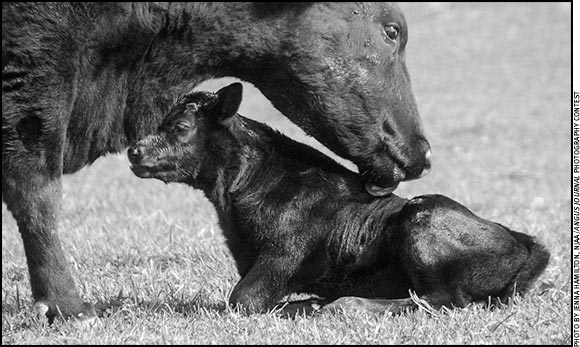
Value of Vaccinations
Earlier vaccination on the ranch pays dividends down the line.
To producers who are thinking about cutting costs, Doug Ensley emphasized that administering vaccines is not the place to cut corners.
“Not vaccinating cattle is not a good idea for cattle health — especially as antibiotic use for treatment of sick cattle is becoming more limiting,” the veterinarian for Boehringer Ingelheim Vetmedica Inc. told attendees Feb. 2 at an NCBA Learning Lounge educational session during the 2017 Cattle Industry Convention & NCBA Trade Show in Nashville, Tenn.

From earlier breeding to a shorter calving season, veterinarian Doug Ensley shared how vaccinating replacement heifers can help ensure they perform and stay in the herd a long time.
He noted that disease prevention — through management protocols like vaccination — is a direct contributor to herd performance of both cow and calf, and thus, ultimately impacts profitability.
Regarding replacement heifers, Ensley emphasized that a vaccination program early on can set those animals up for long-term reproductive success. From earlier breeding to a shorter calving season, he noted that vaccinating heifers can help ensure they perform and stay in the herd a long time.
“That’s the premier goal,” he noted.
Regarding calf health, he shared research that showed as high as 10% of calves experience bovine respiratory disease (BRD) within their first 100 days. Thus, said Ensley, “Waiting to vaccinate when they get to the feedyard is not soon enough. We have to do a better job of taking care of calf health … We’ve got to think about doing it on the ranch.”
Ensley shared research data that shows early vaccination — at about 60 days of age — may be a way to enhance calf health. An Arkansas study found an injectable vaccine administered at 62 days of age didn’t harm calves or cows, and calves thereafter had no incidence of disease.
He also underscored that preconditioning protocols prior to and at weaning are proven to help garner premiums for calves in the marketplace, so they should be considered. Currently only about 30% of producers nationwide utilize this management practice.
In closing, Ensley advised that cow-calf producers should work with a local veterinarian to design a program that fits their operation.
“Build a relationship with them so they help grow your herd and keep it healthy,” he advised. Develop a herd health calendar to track what is being done in the herd, its timing and how it is working.
Additionally, Ensley advised selecting animal health products based on research results, monitoring nutritional status of the herd, and continually improving genetics to maximize productivity.
“Keep excellent records,” he concluded. “If you don’t keep records, how do you make your decisions?”

Editor’s Note: Field Editor Kindra Gordon is a freelance writer and cattlewoman from Whitewood, S.D. This article was written as part of Angus Media’s coverage of the 2017 Cattle Industry Convention. For further coverage, watch future issues of the Angus Beef Bulletin or visit
www.angus.media.






